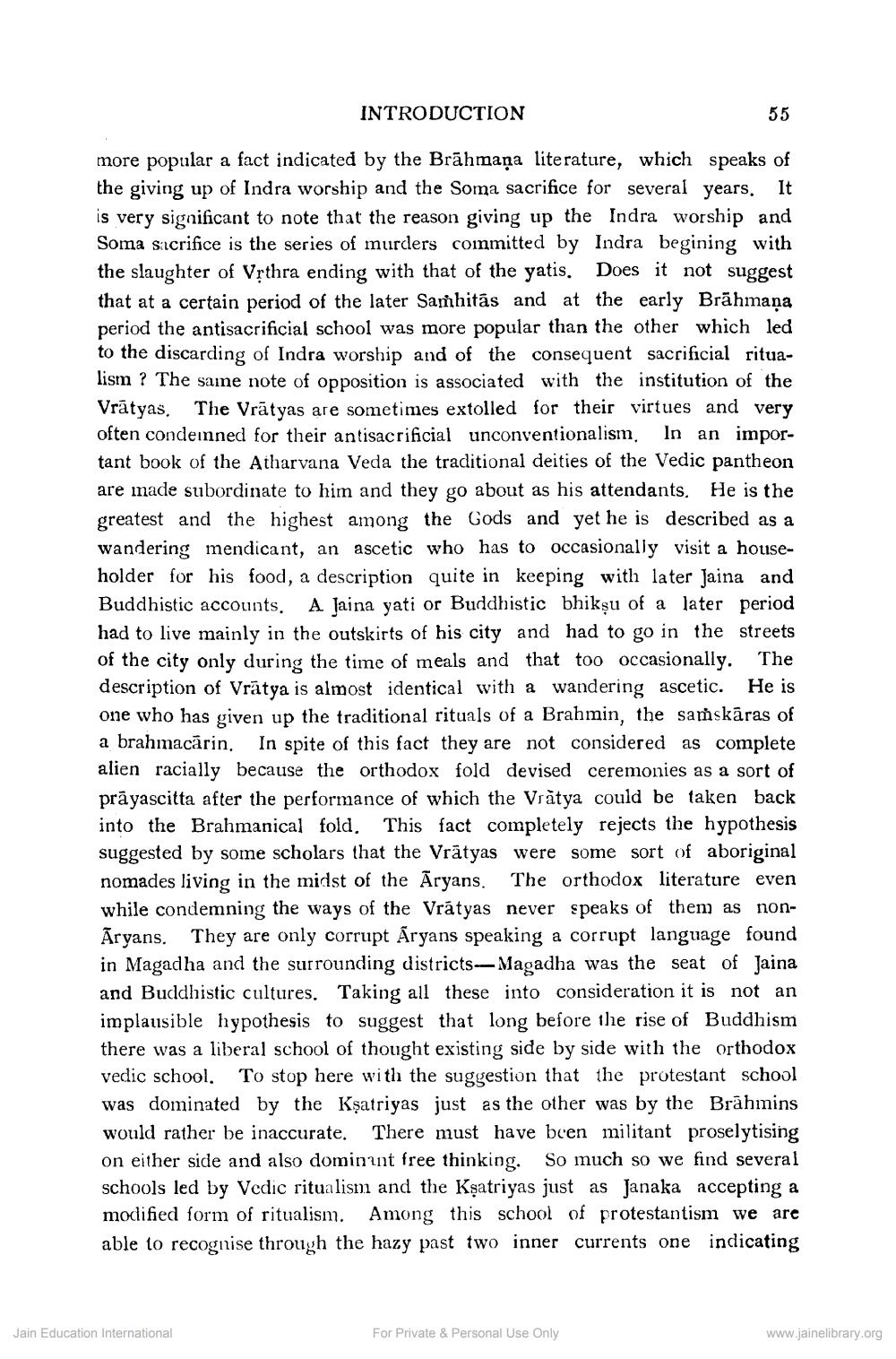________________
INTRODUCTION
55
more popular a fact indicated by the Brāhmaṇa literature, which speaks of the giving up of Indra worship and the Soma sacrifice for several years. It is very significant to note that the reason giving up the Indra worship and Soma sacrifice is the series of murders committed by Indra begining with the slaughter of Vịthra ending with that of the yatis. Does it not suggest that at a certain period of the later Samhitãs and at the early Brāhmaṇa period the antisacrificial school was more popular than the other which led to the discarding of Indra worship and of the consequent sacrificial ritualism ? The same note of opposition is associated with the institution of the Vrātyas, The Vrātyas are sometimes extolled for their virtues and very often condeinned for their antisacrificial unconventionalism. In an important book of the Atharvana Veda the traditional deities of the Vedic pantheon are made subordinate to him and they go about as his attendants. He is the greatest and the highest among the Gods and yet he is described as a wandering mendicant, an ascetic who has to occasionally visit a householder for his food, a description quite in keeping with later Jaina and Buddhistic accounts. A Jaina yati or Buddhistic bhikṣu of a later period had to live mainly in the outskirts of his city and had to go in the streets of the city only during the time of meals and that too occasionally. The description of Vrātya is almost identical with a wandering ascetic. He is one who has given up the traditional rituals of a Brahmin, the samskāras of a brahmacārin. In spite of this fact they are not considered as complete alien racially because the orthodox fold devised ceremonies as a sort of prāyascitta after the performance of which the Vratya could be taken back into the Brahmanical fold. This fact completely rejects the hypothesis suggested by some scholars that the Vrātyas were some sort of aboriginal nomades living in the midst of the Aryans. The orthodox literature even while condemning the ways of the Vrátyas never speaks of them as nonĀryans. They are only corrupt Aryans speaking a corrupt language found in Magadha and the surrounding districts-- Magadha was the seat of Jaina and Buddhistic cultures. Taking all these into consideration it is not an implausible hypothesis to suggest that long before the rise of Buddhism there was a liberal school of thought existing side by side with the orthodox vedic school. To stop here with the suggestion that the protestant school was dominated by the Kşatriyas just as the other was by the Brāhmins would rather be inaccurate. There must have been militant proselytising on either side and also dominant free thinking. So much so we find several schools led by Vedic ritualism and the Kșatriyas just as Janaka accepting a modified form of ritualism. Among this school of protestantism we are able to recognise through the hazy past two inner currents one indicating
Jain Education International
For Private & Personal Use Only
www.jainelibrary.org




